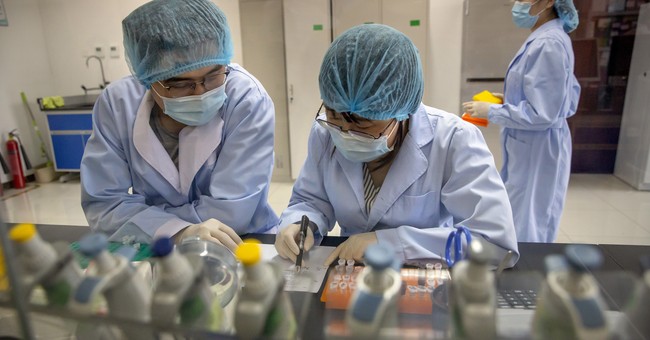Michael Fumento
Factual · Powerful · Original · Iconoclastic
So, Is A Second Wave Coming?
July 02, 2020 · Michael Fumento · TownHall Finance · Coronavirus
Source: AP Photo/Mark Schiefelbein
But are we in danger of a “second wave” at all? It would seem by any rational definition, no.
Originally “2nd wave” appears to have come from references to the horrific “Spanish flu” of 1918-19 that had a summer lull between peaks and actually came back stronger the second time. Now it seems to be just about anything, whether a new spike in cases or no new spike in cases.
But we’re not seeing that lull internationally because while, yes, COVID-19 like all airborne viruses and previously-known coronaviruses doesn’t like heat, humidity, and sunlight, that’s only a factor in the northern hemisphere. Right now, after the U.S., most new infections are from Brazil, in the southern hemisphere. And while most Americans think of Brazil as hot, humid, and sunny, it’s a vast country with five different climates. So Brazil plus vastly increased testing is keeping the international case figures not just high, but at some of the highest points in the entire pandemic. The international death figures are down by several thousand a day. So yes, in real terms we’re heading down and the worst is far behind.
Dr. Anthony Fauci, the director of the National Institute of Allergy and Infectious Diseases, who largely is in the alarmist camp, nonetheless says we are not currently seeing a second wave. He added that a second wave in the fall, which many experts, including Fauci himself, have predicted, is “not inevitable.”
The explanation isn’t proverbial rocket science.
- This time we will know coronavirus is out there.
- This time we can expect to have some effective treatments. The steroid dexamethasone appears to dramatically lower deaths in the most severe cases when intubation is needed (and is dirt cheap), while the (expensive) antiviral Remdesivir may at least reduce hospital time although there’s no evidence it reduces deaths.
- The term “medical arts” exists for a reason; treatments improve with practice. Doctors are comparing notes and publishing data on how best to both recognize and treat severe patients. For example, there’s been a major controversy over when to intubate. No, it’s not killing more people than it saves but it’s possible that premature intubation is harmful. It will also take more study to determine whether dexamethasone is more effective (or when) by injection or taken orally. The learning will continue.
- We are learning more about how the virus actually spreads, although whether this will translate into public policy or personal actions remains to be seen. Despite strong and growing evidence that Vitamin D deficiency is an easy, cheap, rectifiable risk factor, the public health community seems uninterested in promoting supplements or absorption through sunshine.
Most importantly, a significant portion of the population will have already been exposed by then and developed immunity (as antibody tests are now showing) whereas during the first wave nobody was immune. CDC Director Robert Redfield has stated antibody testing is indicating that probably 10 times as many Americans have been infected without knowing, or about 24 million. That’s 24 million fewer we should have to worry about in the near future.
And a significant proportion of those most likely to die will have died. A few seconds of thought shows how perhaps lockdowns, SD (and SD-shaming), mask-wearing and so on have been counterproductive to the extent they’re not allowing people to become infected.
This has nothing to do with the concept of “herd immunity,” which has been widely misused during the COVID-19 outbreak. That means so many people are protected that those who haven’t been exposed receive the benefits of protection. But depending how contagious an infection is, usually 70% to 90% of a population needs protection to achieve herd immunity. That simply won’t be achieved without a vaccine, a highly effective one that virtually everyone receives.
Rather it’s simple math that every person infected now is one future infection. The authoritarian measures implemented in the U.S. and elsewhere were clearly stated, at first, to only flatten the curve to keep health care systems from being overwhelmed. Nobody pretended, at first, that we were actually going to reduce overall infections or deaths and very few, our friend Neal Ferguson being an exception, were encouraging lockdowns until an effective and publicly acceptable vaccine is ready, which could be years.
All we’re guaranteed of seeing in terms of waves is one after another of bankruptcies, layoffs to prevent bankruptcies, and continued psychological damage from keeping humans from interacting. We’re social animals; not social distance animals. There was never a good excuse for continuing lockdowns past the original goal and there isn’t one today. Even if it were true that actually COVID-19 cases were going up in a truly meaningful sense, it would not justify locking down again.
